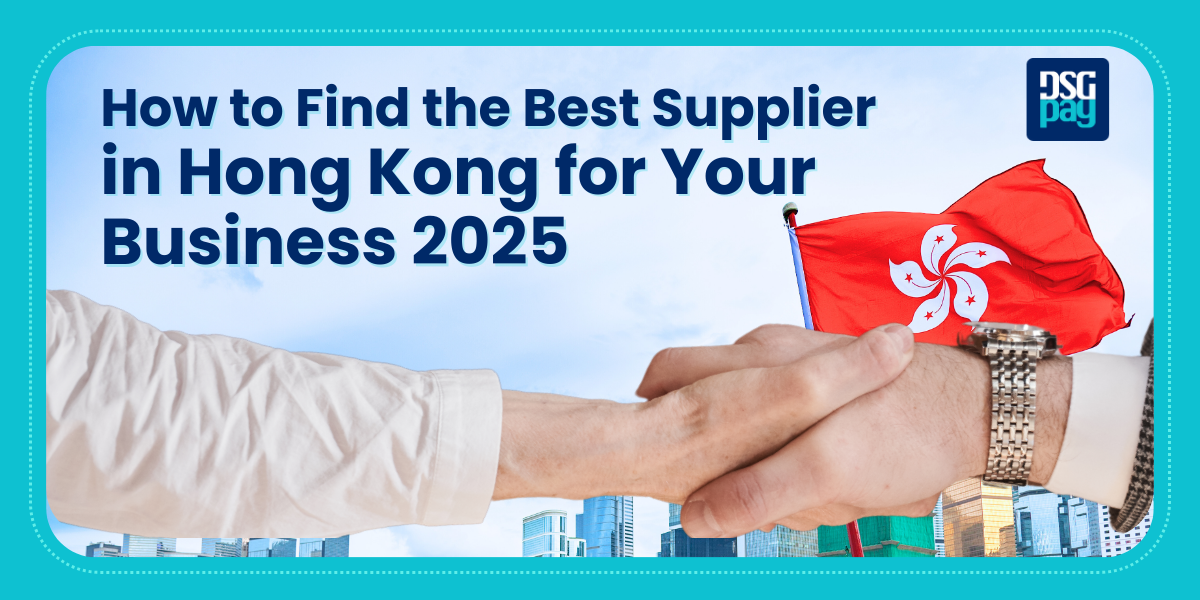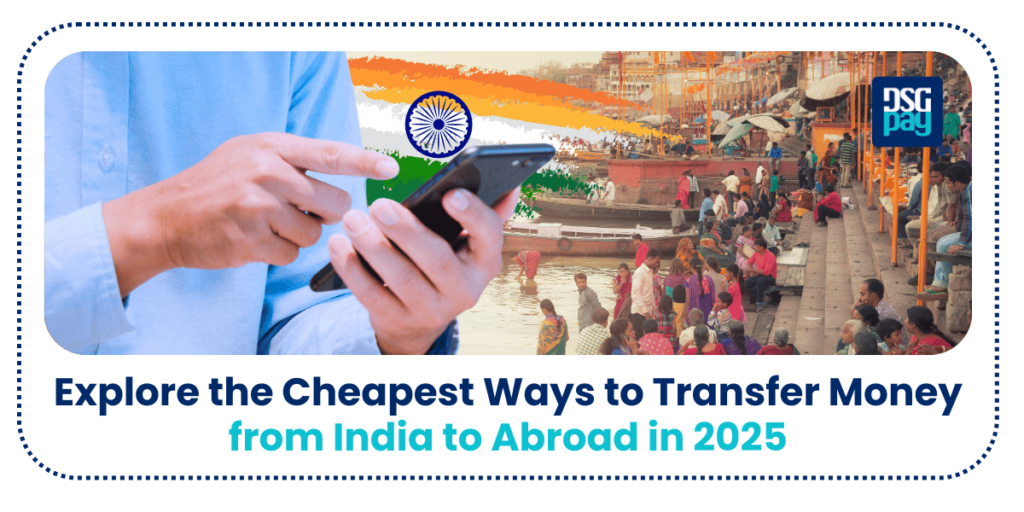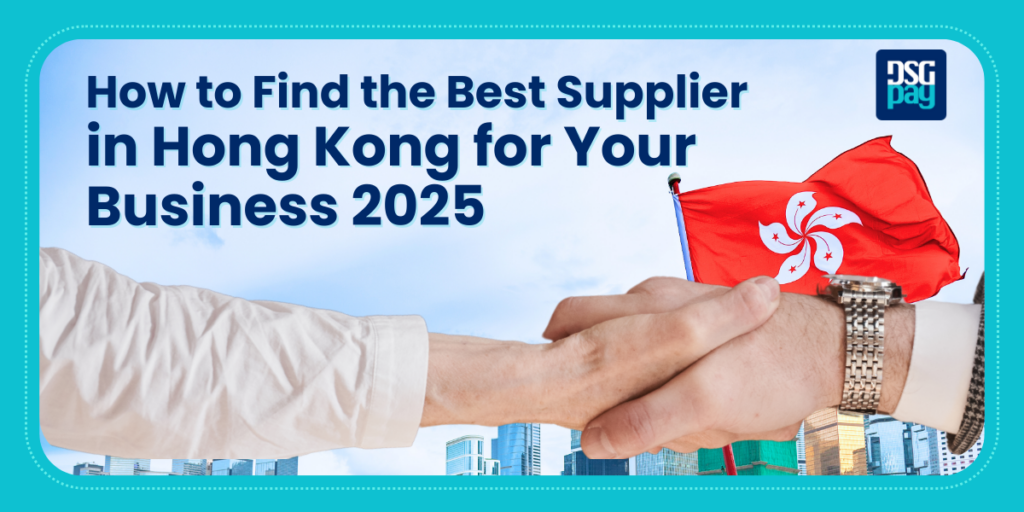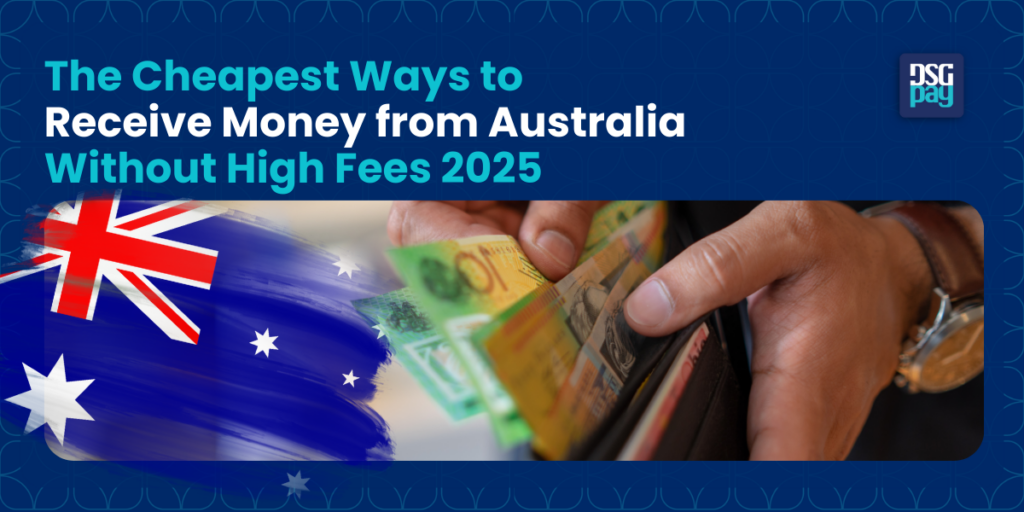Looking for top suppliers in Hong Kong? Great, your search ends right here.
In 2023, Hong Kong held its spot as the 10th largest exporter in the world, according to the World Trade Organization (WTO). Its strategic location, top-notch infrastructure, and business-friendly environment make it a strong contender for sourcing, despite the ongoing challenges.
Meaning if you’re planning to start an online store or a brick-and-mortar shop, you’ll need the best quality products sourced from top suppliers.
This guide will explain the essentials of working with a supplier in Hong Kong. You’ll learn to establish trustworthy partnerships and create an effective sourcing plan tailored to your business needs.
Table of Contents
Key Takeaways:
- Pick suppliers with good quality, prices, and customer service.
- Decide if you want to buy in bulk or drop ship based on your budget.
- Talk clearly and build a strong relationship with your supplier.
- Check if they have the right licenses, low MOQs, and fair return policies.
- Use platforms like Alibaba, AliExpress, DHgate, and HKTDC to find reliable suppliers.
- Try trade fairs, networking, Jungle Scout, or sourcing agents for better supplier connections.
Wholesale Suppliers vs Dropshipping: Choosing the Right Supply Model
When planning your sourcing strategy in Hong Kong, it’s important to choose the right supply model for your business. The most common options are wholesale suppliers and dropshipping, each offering unique advantages and challenges.
Check out the table below to find the model that best matches your business goals.
| Key Element | Wholesale Suppliers | Dropshipping |
| Inventory Control | You purchase and hold inventory yourself. | Supplier holds and ships inventory. |
| Upfront Investment | Higher (bulk purchasing) | Lower (no need to invest heavily upfront). |
| Profit Margins | Higher (buying in volume gives you access to lower per-unit costs.) | Lower (you pay a higher per-unit price). |
| Customization | More control over products and packaging. | Limited customization options. |
| Shipping Control | Full control over the shipping process. | Supplier controls shipping. |
| Risk Level | Higher (risk of unsold stock). | Lower (no inventory risk). |
| Best For | Established businesses, scaling operations. | New businesses, small-scale sellers, or product testing. |
Once you’ve chosen your supply model, the next step is deciding how to source your products; either directly from manufacturers or through trading companies.
- Manufacturers typically offer lower prices, better quality control, and more room for customization, especially when ordering in bulk.
- Trading companies act as intermediaries, giving you access to a wider product range but often at higher prices and with limited customization.
How to Choose the Best Supplier in Hong Kong
For starters, not all suppliers can provide you with premium quality products. And if you want to work with a supplier in Hong Kong you’ve got to do a deep research before picking a supplier.
Whoever you pick, make sure they tick all the boxes in this checklist.
- Product Quality
- Always request samples before placing a large order. A supplier in Hong Kong might promise top-tier quality, but the only way to know for sure is to inspect the product yourself.
- Why it matters: A single batch of defective products can lead to returns, negative reviews, and long-term damage to your brand reputation.
- Pro tip: Order multiple samples from different suppliers to compare materials, craftsmanship, and durability.
- Pricing & MOQs
- Compare multiple quotes: Don’t settle for the first offer.
- Negotiate bulk discounts: Many suppliers in Hong Kong will lower prices if you commit to larger orders.
- Watch out for MOQs (Minimum Order Quantities): If you’re testing a new product, high MOQs can tie up cash flow unnecessarily.
- Low prices are tempting, but they often come with trade-offs; lower quality, unreliable service, or hidden fees.
- Cost vs. Quality
- There’s a reason why luxury brands don’t source from the cheapest factories.
- Cheap suppliers: Lower costs, but higher risk of defects, delays, and unhappy customers.
- Premium suppliers: Better quality, reliability, and service, but at a higher price.
- How to decide? Run a cost-benefit analysis. Will the higher-quality supplier lead to fewer returns, better reviews, and higher customer lifetime value? If yes, the extra cost is justified.
- There’s a reason why luxury brands don’t source from the cheapest factories.
- Shipping Speed and Order Fulfillment
- Ask for estimated lead times. Clarify how long it typically takes to fulfil orders and ask how the supplier handles out-of-stock situations. Clear timelines help manage customer expectations and prevent frustration from long delays.
- Check shipping reliability and verify with real customer reviews. Some suppliers promise fast shipping but miss deadlines consistently.
- Consider supplier location, local vs. overseas suppliers. Sometimes paying a little more for faster delivery is worth it.
- Return Policies
- Understand the return process, especially who covers the return shipping costs. Ask about their policy on defective items. Clear terms are essential to avoid future surprises.
- Customer Service
- A supplier might have great products, but if they’re slow to respond or difficult to work with, you’ll regret it when issues arise.
- Test their responsiveness: Send a few emails or messages with questions before placing an order.
- Ask how they handle problems: Late shipments, defects, or order changes.
- Look for transparency: Suppliers who dodge questions now will be a nightmare later.
- Supplier Relationships and Negotiation
- Keep in mind that many terms are negotiable, particularly as you build relationships with your supplier. Strong supplier relationships can lead to better terms down the line.
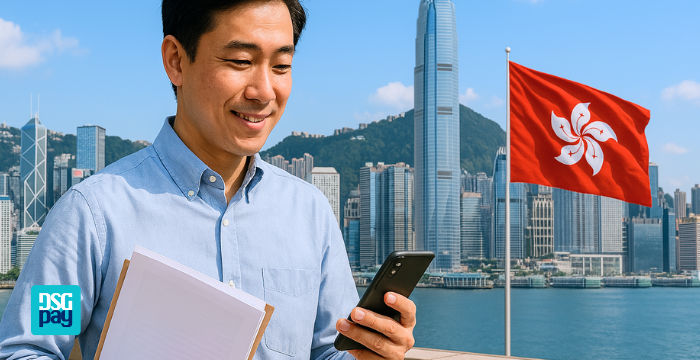
8 Ways to Find a Wholesale Supplier in Hong Kong
Once you know how to choose the right supplier, the next step is finding one that fits your business needs. In this section, we’ll explore eight proven ways to connect with reliable wholesale suppliers in Hong Kong:
1. Alibaba
Alibaba is a massive business-to-business (B2B) marketplace that connects buyers (like you) with suppliers; mostly manufacturers and wholesalers based in China, Hong Kong, and across Asia. Think of it like Amazon but for bulk buying and custom product development. So, if you want to source products from suppliers in Hong Kong, Alibaba is a good option.
But one drawback is that your competitors already know about this platform. So if you want to stay ahead of the curve, check out other options present on this list.
Pros:
- Direct access to manufacturers, better pricing leverage.
- Full customization.
- Ideal for scaling large-volume orders.
- Negotiation-friendly, especially for repeat or bulk buyers.
Cons:
- High MOQs (not ideal for early testing).
- Vetting suppliers can take time and research.
- Overwhelming interface for first-timers.
- Shipping can be slow unless you negotiate fast lanes.
2. AliExpress
AliExpress is a B2C (business-to-consumer) platform, also owned by Alibaba Group. Unlike Alibaba.com, which focuses on bulk B2B orders, AliExpress is designed for smaller purchases, sometimes even single items. It’s wildly popular among drop shippers and small eCommerce store owners.
The product variety is huge; from electronics to skincare, you can find any item in all major categories. So, if you’re planning to find a supplier in Hong Kong, Alibaba is a cheaper option to get started.
Pros:
- No minimum order quantities, great for trial runs.
- Integrates easily with platforms like Shopify and Oberlo.
- Buyer protection gives peace of mind.
- Tons of product categories and suppliers.
Cons:
- Higher per-unit prices.
- Slower shipping, especially outside China.
- Limited customization options.
- Mostly resellers, not factories.
3. DHgate
Think of DHgate as the middle ground between AliExpress and Alibaba. You get more flexibility than Alibaba without the full-scale complexity, plus better prices than AliExpress in many cases. It’s a good pick if you’re past the testing phase but not yet doing massive volumes, with many suppliers in Hong Kong available.
Pros:
- Lower MOQs than Alibaba.
- Decent selection of product types and styles.
- Platform-supported buyer protection.
- User-friendly search filters and supplier reviews.
Cons:
- Quality control can vary.
- Customization options are limited.
- Still requires supplier vetting.
- Less mainstream than AliExpress.
4. HKTDC (Hong Kong Trade Development Council)
If you’re looking to build a premium brand and care about supplier transparency and consistent quality, HKTDC is where you turn. It’s a curated B2B platform connecting you to verified suppliers in Hong Kong and nearby regions.
Pros:
- Access to high-quality, vetted suppliers.
- Better communication (many reps speak fluent English).
- Ideal for launching premium or branded product lines.
- Transparent and professional supplier listings.
Cons:
- Not beginner-friendly.
- Higher MOQs and pricing.
- May require a business license or registration.
- Relationship-building takes time.
5. Trade Fairs & Manufacturer Visits
Sometimes, real-world hustle wins. If you have the budget, attending trade fairs or visiting factories in person can be a game-changer. You get to see the product live, negotiate face-to-face, and build trust the old-school way with many suppliers in Hong Kong.
Pros:
- High trust and better negotiation outcomes.
- Touch and feel product quality in real-time.
- Great for custom or unique designs.
- Spot trends early and form exclusive deals.
Cons:
- Travel, visa, and accommodation costs add up.
- Time-consuming.
- Language and cultural barriers may exist.
- More suited to advanced or scaling businesses.
6. Professional Networking
Referrals don’t just work in hiring, they’re gold for top rated suppliers in Hong Kong. LinkedIn, seller forums, and niche Slack groups can connect you with manufacturers and that don’t even show up on marketplaces. So, if you’re looking to connect with a supplier in Hong Kong, exploring these sites is a good option.
Pros:
- Trusted, often vetted recommendations.
- Access to lesser-known but high-quality suppliers.
- Relationship-based, better deals and support.
- Low or no cost to get started.
Cons:
- Takes time to build a meaningful network.
- Verification still falls on you.
- No centralized directory or filters.
- Can be hit or miss depending on the connections.
7. Jungle Scout Supplier Database
Originally built for Amazon sellers, this research tool lets you spy on where your competitors are sourcing from. If a top seller on Amazon is crushing it, you can trace it back to their manufacturer and potentially use the same one, including a supplier in Hong Kong.
Pros:
- Discover high-performing suppliers based on shipping history.
- Filter by product, seller, or company.
- Great for supplier comparison and due diligence.
- Reveals real-world sourcing patterns.
Cons:
- Paid tool (no free plan).
- Amazon-focused.
- Still requires vetting and outreach.
- Not plug-and-play like a marketplace.
8. Sourcing Agents
Sometimes, it’s smarter to delegate. A good sourcing agent knows the language, factories, and shipping logistics. They can manage all the supplier chaos for you. They’re perfect if you want to scale fast or go private-label without babysitting every step, especially when dealing with suppliers in Hong Kong.
Pros:
- Handles vetting, negotiation, QC, and logistics.
- Saves time, especially when scaling.
- Great for custom designs and brand packaging.
- Easier communication and fewer surprises.
Cons:
- Agent fees or commissions add up.
- Reliability varies so choose carefully.
- Less control compared to direct sourcing.
- Miscommunication is still possible if not aligned upfront.
Specific Considerations When Sourcing from Hong Kong
Sourcing from Hong Kong offers great potential, but there are a few things to keep in mind.
- Language & Communication: While many suppliers in Hong Kong speak English, learning basic Mandarin can help strengthen your relationship and build trust. Even a little effort to speak their language can show respect and go a long way in business.
- Cultural Sensitivity: Business in Hong Kong is all about relationships, so take time to build rapport before diving into negotiations. Gift-giving is also common and can show respect, but keep it thoughtful and appropriate. Too much or too little can send the wrong message.
- Legal & Regulatory Issues: Make sure your supplier in Hong Kong complies with Hong Kong’s trade laws. Always verify business licenses and certifications to avoid any legal headaches. Doing this ensures your partnership runs smoothly and stays on the right side of the law.
Build Strong Supplier Relationships and Negotiate Better Terms
Most people treat supplier relationships as transactional. But if you want long-term success in dropshipping or e-commerce, you need to start thinking of your suppliers as partners, not just vendors.
To establish a successful and long-term partnership with a supplier in Hong Kong, here are some key practices to keep in mind:
- Be clear about your expectations: product quality, lead times, and packaging details.
- Use communication channels like email, WhatsApp, or WeChat for smooth and steady communication.
- Always pay invoices on time to build trust.
- Offer constructive feedback to show you’re in it for the long haul.
- Confirm orders and shipping details in writing to avoid confusion.
- Recognize and appreciate good work from your supplier.
- Be honest about any issues with products or shipments and collaborate to find solutions.
- Ask for references from previous clients to assess supplier reliability and quality.
- Verify insurance, especially product liability coverage, for protection against potential issues.
Final Thought
Finding the right supplier in Hong Kong in 2025 requires careful research, effective negotiation, and strong relationship-building. By using online directories, attending trade shows, and working with sourcing agents, you can secure reliable suppliers in Hong Kong that will help your business succeed.
Start small, test suppliers, and scale partnerships gradually. The right supplier in Hong Kong can be the backbone of your eCommerce success, so take the time to establish a strong partnership that supports your business growth in the long term.
After choosing your suppliers, you’ll need to handle payments. This means sorting out how to pay them, especially if you’re working internationally. You want to make sure the payment method is easy, safe, and works well with your business.
Simplify Your Hong Kong Supplier Payments with DSGPay
After finding the right supplier in Hong Kong, the next step is setting up an easy, secure, and cost-effective way to handle payments especially if you’re managing international transactions.
Whether you’re sourcing products for your online store or expanding a wholesale operation, DSGPay ensures your payments are fast, secure, and professionally managed without needing a local Hong Kong bank account.
Why Use DSGPay for Supplier Payments in Hong Kong?
- Global Named Virtual Accounts: Get virtual accounts in your company name to send, receive, and manage funds like a local business in Hong Kong.
- Multi-Currency Support: Hold, send, and receive payments in 30+ currencies, including HKD, USD, EUR, CNY, and more.
- Favourable FX Spreads: Enjoy competitive foreign exchange rates that help you save more when paying suppliers in Hong Kong.
- Licensed in Hong Kong: DSGPay operates under a Hong Kong Money Service Operator (MSO) license, ensuring your payments are handled securely and professionally.
- Real-Time Tracking: You can track all your payments in real time, so you the status of your supplier payments.
How to Make a Payment via DSGPay:
- Sign Up Your DSGPay Account
- Register online easily via the DSGPay’s mobile app to create your business account.
- Add Your Supplier Details
- Collect their payment details and add them to your beneficiary so they can receive payments.
- Use a Virtual Account
- Access your multi-currency virtual account to manage funds and streamline supplier payments.
- Top Up Your Account
- Top up your DSGPay account with the desired amount.
- Make a Payment
- Select the beneficiary, choose the currency, enter the amount, and pick your preferred payment method.
- Check Notification: Check the transaction notification on DSGPay and let your supplier know once it’s done.
Want to see how it works? Watch the video below for a quick walkthrough of sending money to your supplier via DSGPay.
